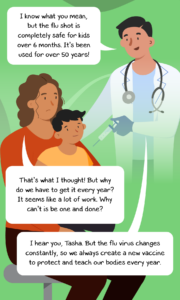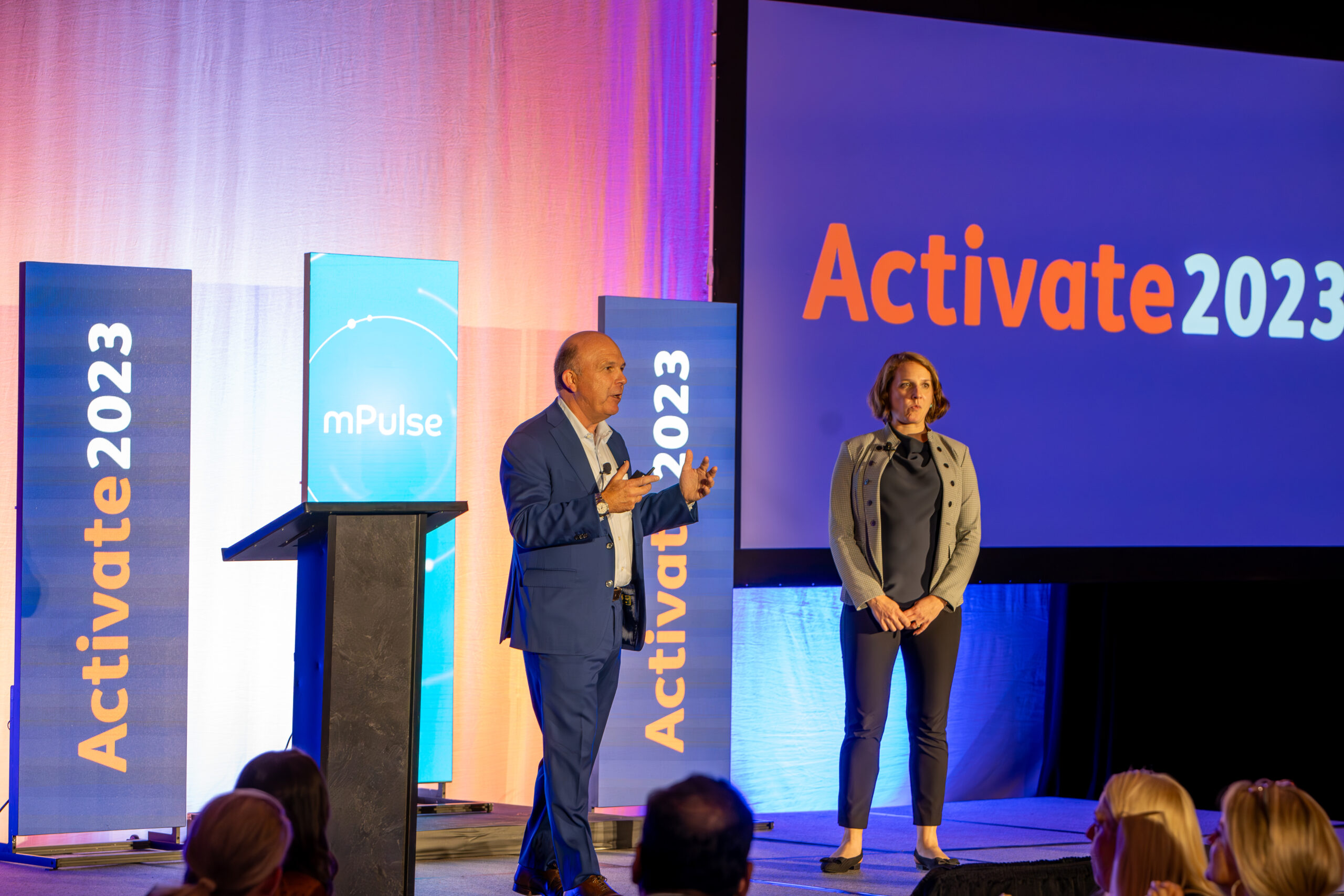Flu season is coming back around, and in a post-COVID world, that means changes in how members engage when it comes to being vaccinated. Lingering perspectives related to vaccine hesitancy may influence members’ reluctance to be vaccinated for the flu despite vaccinations being even more critical to their continued health. Health plans, providers, and pharmacies will have to work harder this year to ensure their health consumers are vaccinated and protected against the flu than they have in years past.
With the unpredictability of flu severity from season to season, outreach and patient engagement to provide information and identify resources for access to vaccinations is integral to a health plan’s ability to proactively communicate with diverse populations through targeted content.
Annually, unvaccinated individuals will cost the healthcare system over $10.4 billion and an additional $17.6 Billion in lost worker productivity.
Flu vaccine patient education can help to prevent:
- 5 million flu-related illnesses
- 7 million flu-associated medical visits
- 105k flu-associated hospitalizations, and
- 3k flu-associated deaths
So, what can the healthcare industry do to combat this? With tools like behavioral science, interactive flu vaccine education, and conversational AI at their disposal, it’s possible to see significant increases in flu vaccination rates among members.
Let’s take a closer look at why.
The Foundation: Science of Human Behavior
Let’s start with the basics for any outreach program we run: behavioral science. In this mega-study conducted by The University of Pennsylvania and Walmart, 22 different behavioral science techniques were tested. These 22 varied techniques were embedded into messages delivered through SMS to over 650,000 Walmart pharmacy patients to determine which boosted vaccination rates the highest. Overall, including all these techniques increased flu vaccination rates by an average of 6.7% over a three-month follow-up period.
However, the endowment effect was the most effective technique, which encouraged patients to visit Walmart for a flu vaccine reserved specifically for them. By telling a person a particular flu shot is ‘reserved for you’ and already belongs to them, the vaccine becomes a tangible thing of value that they own. The Endowment Effect is an emotional bias to put a higher value on owned objects. This approach also uses the technique of Loss Aversion, a bias that makes us care nearly twice as much about avoiding loss than receiving an equivalent gain. In this case, if you don’t claim your flu shot, you’ll lose something you own.
We use behavioral science in every program we deploy for our clients, but this study specifically and the endowment effect itself was the basis with which we built our flu vaccination solution for the 2022-2023 flu season. What UPenn and Walmart didn’t have, though, was the following few factors that pushed our flu program beyond even this study.
Streaming flu vaccine patient education
With so much flu vaccine hesitancy in our post-COVID world, flu vaccine patient education about the safety and efficacy of vaccinations is a necessary step, and departing from the mundane pamphlets and brochures of the past by utilizing streaming health content is an extremely effective way to do this.

The content we’ve produced for flu vaccine education is a series of fotonovelas, which are auto-forwarding image-based stories with a visual interface similar to the stories feature on Instagram. Fotonovelas are ultimately a health literacy tool, but at the same time, they make learning fun and easy (80% of learners on our platform report liking or loving the fotonovela content type).
In this specific flu fotonovela below, the characters featured resonate with diverse audiences, the storylines detailed transcend linguistic and cultural barriers to deliver essential information, and the tone provides empathy and support on the path toward the desired call to action. The best part is that health patients who view a Fotonovela are 72% more likely to get vaccinated.
2-Way conversations uncover barriers
Having 2-way conversations allows you to gather insights about your members that can inform future communication.
- What is their sentiment toward the program and plan?
- Why haven’t they been vaccinated?
- Have they already been vaccinated, and we don’t know?
Knowing why they haven’t been vaccinated allows the plan to respond with education and resources to assist.
- Do they need help figuring out where to go? Send them the information to their nearest pharmacy.
- What about if they’re not sure they need a flu vaccination? Send them a Fotonovela to educate them!
Multiple channels, multiple languages
The UPenn and Walmart mega-study tested SMS messages, but why stop there? A large part of an effective engagement strategy is meeting members where they are. As such, our solution includes SMS, IVR, and email channels. Take the concept of meeting members where they are one step further, and you’ll get the ability to deploy this vaccination solution in both English and Spanish. This means reaching more of your population in the way they want to communicate.
Tackle flu early and effectively
The CDC recommends that everyone six months and older, especially people at higher risk, should get a flu vaccine annually to reduce their risk of contracting seasonal flu, alleviate the severity of symptoms, and decrease the likelihood of experiencing major health complications if infected. The importance of each individual vaccinating against the flu needs to be communicated to members through targeted, succinct, and easily understandable materials delivered through channels to reach them where they are most apt to respond and be motivated to act. Studies have found that patients who are informed and effectively motivated are also more likely to adhere to their treatment recommendations.
Our flu vaccination solution
mPulse Mobile’s flu vaccination solution uses proven behavioral science, dynamic content, and an omnichannel approach to overcome common vaccine barriers and get more members vaccinated. With over 15M Flu vaccination touchpoints sent to Medicaid, Medicare, and Commercial members by mPulse in the last two years using its 2-way Natural Language Understanding platform, we have learned from millions of past vaccine conversations in both Spanish and English. We use behavioral science in a relatable and quick experience and employ Fotonovelas to empower members to act. We can help overcome common barriers and resistance by listening for vaccine readiness.
For more information on this flu vaccination solution and a live demo on how we can improve your flu vaccine patient education, register for our webinar, Double Your Vaccination Rates for Your Health Population.













